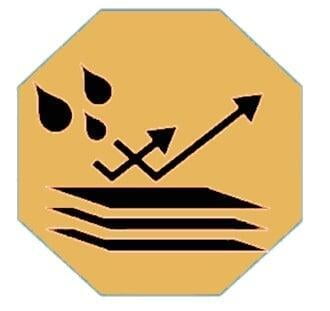Source: www.mokolight.com
The process of high-power LED package is complex and the structure is cumbersome. LED package technology is influencing the performance and life of LED. In recent years, LED packaging technology has been a hot research project. Many large companies have invested a lot of human and material resources in research. LED packaging technology has been greatly improved, especially the research on high-power white LED packaging has been more in-depth, and a variety of LED packaging processes have been obtained.
The functions of LED packaging mainly include:
- Strengthen the strength and stability of LED and improve the reliability of LED
- Strengthen heat dissipation to reduce chip junction temperature and improve led performance;
- Strengthen the light output control, improve the light output efficiency and optimize the beam distribution;
- Strengthen power supply management, optimize the control of power supply, and improve the conversion efficiency of DC / AC;
Key technology of high-power LED package
The thermal resistance of LED package mainly includes the internal thermal resistance and interface thermal resistance of materials (heat dissipation substrate and heat sink structure). The heat dissipation substrate absorbs the heat generated by the wafer and transfers the heat to the heat sink. The heat sink transfers the heat to the air. The LED transfers the heat of the wafer through the heat dissipation substrate and heat sink. The materials used for heat dissipation substrates are generally materials with strong thermal conductivity, including ceramics (such as Al2O3, ain, SiC), metals (such as aluminum, copper), silicon and composites.
The manufacturing process of high-power LED is relatively complex. We need to weld the LED chip and the corresponding heat dissipation substrate together. It integrates driving circuit, control compensation circuit, scenic spot protection circuit and eutectic welding layer on the substrate. The heat dissipation substrate has simple structure and high material thermal conductivity, which greatly improves the heat dissipation performance and solves the heat dissipation problem of high-power LED packaging.
An optimization point of LED packaging is to reduce the contact thermal resistance between interfaces and enhance heat dissipation. Thermal interface (TIM) is the interlayer between wafer and thermal substrate. The material selection of TIM is very important. TIM commonly used materials are conductive adhesive and thermally conductive adhesive, which have poor thermal conductivity, generally 0.5-2.5w/mk. The conductive adhesive of TIM will incorporate thermally conductive nanoparticles to reduce the thermal resistance of the interface.
The potting adhesive coated on the surface of the wafer has a relatively high refractive index, which will reduce the loss of photons at the interface and increase the transmittance. As the potting glue wraps the wafer, the potting glue should have a mechanical protection effect on the wafer. Therefore, the potting adhesive should not only have high refractive index and light transmittance, but also have good stability and fluidity. In order to improve the service life of LED and reduce the light decay of LED, the potting adhesive should preferably have the characteristics of low moisture absorption and aging resistance.
At present, the commonly used potting adhesives include epoxy resin and silicone adhesive. Silicone adhesive has low hygroscopicity, low stress, good thermal stability, high transmittance and high refractive index. It has obvious advantages over epoxy resin. Most high-power LED package use silicone adhesive, but the cost is much higher than epoxy resin. Although silica gel has good stability and light transmittance, its performance is related to the temperature of the external environment. With the increase of temperature, the thermal stress inside the silica gel will increase and the refractive index will decrease, which will increase the loss of photon refraction and total reflection and affect the uniform distribution of light intensity.
In general, in order to improve the efficiency and reliability of LED light, the encapsulant layer has a tendency to be gradually replaced by transparent glass or glass-ceramic with high refractive index. By adding or coating phosphor powder on the glass surface, it will not only improve The uniformity of the phosphor is improved, and the packaging efficiency is improved.
To realize high brightness LED lamps, we need to increase the power of LED, which means that led will produce more heat. The heat dissipation performance of led directly affects the luminous efficiency and service life of LED. If the heat dissipation is poor, the temperature of LED chip will increase due to heat accumulation, which may reduce the luminous efficiency, accelerate the aging of relevant components and reduce the service life of LED.
The high-density integration of LED chips produces a lot of heat, which can not go away in a short time, and the temperature of the heat dissipation substrate rises rapidly. It is very necessary to adopt efficient packaging process and heat sink structure. There are two types of heat sink structures, one is active heat dissipation, and the other is passive heat dissipation. Passive heat dissipation generally selects fins with a high ribbed coefficient, and dissipates heat to the environment through natural convection between the fins and the air. This solution has a simple structure and high reliability, but due to the low heat transfer coefficient of natural convection, it is only suitable for low power density and low integration. For high-power LEDs (packages), it should adopt active heat dissipation, such as fins + fans, heat pipes, forced convection of liquids, microchannel refrigeration, phase change refrigeration, and so on.

